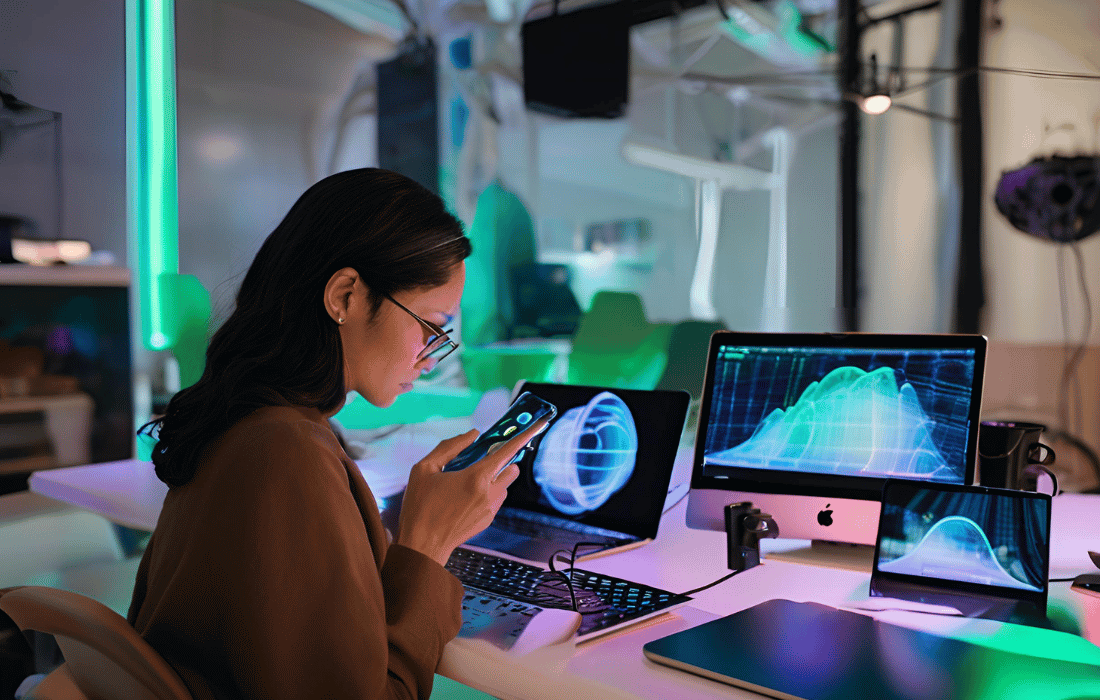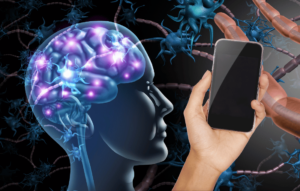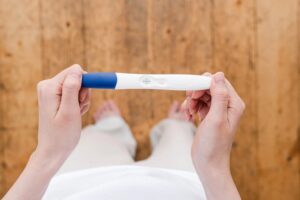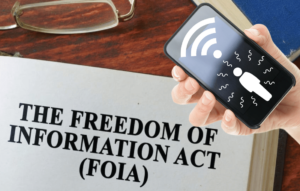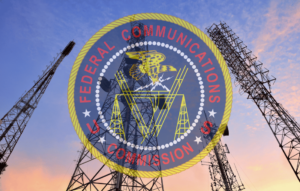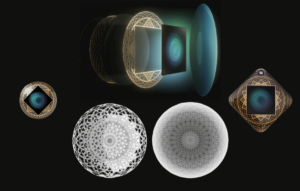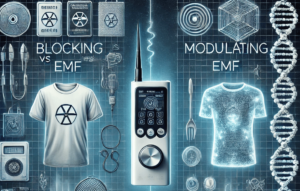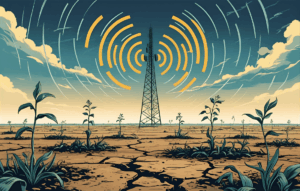For decades, the telecom industry has insisted that non-ionizing radiation—such as that from cell phones, Wi-Fi routers, and 5G towers—is completely harmless. They’ve assured us that unless radiation is strong enough to heat tissues, it simply can’t cause harm. But what if this claim is fundamentally flawed? What if the entire foundation of their safety assurances is built on outdated science?
A newly published peer-reviewed study by Dr. Paul Héroux, a professor at McGill University, has turned this assumption on its head. His findings, published in Heliyon, not only dismantle the industry’s “thermal-only” argument but also expose a biological mechanism through which wireless radiation disrupts the body’s cellular functions at levels far below regulatory limits.
So, if you’ve ever dismissed concerns about wireless radiation as tinfoil-hat paranoia, it might be time to reconsider.
The Science They Don’t Want You to See
We’ve been assured that wireless radiation is perfectly safe for years—but what if the science tells a different story? A groundbreaking new study reveals that even low radiation levels can disrupt biological systems, proving that industry-backed claims of safety are far from the full picture.
The Misconception of Non-Ionizing Radiation
The industry’s primary defense has always been that non-ionizing radiation lacks the energy to break chemical bonds, making it inherently safe. But Dr. Héroux’s study demonstrates that this argument is a misdirection.
Ionization Isn’t the Problem—Electron Transport Is: The human body is an electrochemical system, with electrons and protons constantly flowing to generate energy. Wireless radiation disrupts these processes by interfering with electron transport, leading to oxidative stress and cellular dysfunction.
Biological Damage Occurs Without Heat: Industry claims that harm only occurs at “thermal levels” ignore how living cells interact with electromagnetic fields. The study reveals that biological reactions occur over much longer distances than previously assumed, making them susceptible to disruption by even weak electromagnetic fields.
The Second Law of Thermodynamics Confirms It: According to fundamental physics, electromagnetic fields inevitably interact with biological systems. In other words, the idea that non-ionizing radiation is “too weak to cause harm” isn’t just wrong—it’s impossible.
The Wireless Industry’s Regulatory Failures
Regulatory bodies like the FCC and the International Commission on Non-Ionizing Radiation Protection (ICNIRP) have long ignored growing scientific evidence that wireless radiation harms human health.
In fact, a 2021 court ruling found that the FCC had failed to consider over 11,000 pages of scientific evidence showing that radiation at levels far below their current limits can cause biological damage. Despite this, the agency has yet to update its guidelines, which have remained unchanged since 1996.
The Health Consequences of Wireless Radiation Exposure
While the telecom industry continues to dismiss concerns about wireless radiation, mounting scientific evidence tells a different story. Research has linked exposure to a variety of health issues, from oxidative stress and reproductive harm to an increased risk of cancer. These findings challenge the outdated safety guidelines set decades ago and demand urgent attention.
Oxidative Stress: The Gateway to Chronic Disease
Oxidative stress is one of the most well-documented effects of wireless radiation exposure. This occurs when the body produces excessive reactive oxygen species (ROS), which damage cells and contribute to aging, inflammation, and disease.
Studies have shown that RF radiation exposure:
Increases oxidative stress markers in the brain, leading to cognitive decline and neurodegenerative diseases like Alzheimer’s and Parkinson’s.
Disrupts mitochondrial function, reducing energy production and contributing to fatigue and metabolic disorders.
Weakens the immune system, making individuals more susceptible to infections and autoimmune diseases.
Reproductive Harm and DNA Damage
Several studies have found that even low levels of wireless radiation can cause damage to sperm and eggs, leading to reduced fertility and increased risk of genetic mutations.
Studies have found that men who kept their cell phones in their pockets had significantly lower sperm counts and motility compared to those who didn’t.
Research on pregnant mice exposed to Wi-Fi radiation showed increased fetal abnormalities and developmental issues in offspring.
The National Toxicology Program (NTP) found “clear evidence” that cell phone radiation caused DNA damage in rats, a finding that industry-funded studies have failed to replicate.
Increased Risk of Cancer
Despite industry efforts to dismiss the evidence, numerous studies have linked long-term exposure to wireless radiation with an increased risk of cancer.
A landmark study by the Ramazzini Institute found that RF radiation at exposure levels lower than those from cell towers increased the risk of tumors in rats.
The World Health Organization’s International Agency for Research on Cancer (IARC) classified RF radiation as a Group 2B carcinogen (“possibly carcinogenic to humans”) in 2011, with many scientists now pushing for a reclassification to Group 1 (“definitely carcinogenic”).
The NTP’s $30 Million Study—And Their Decision to Pull the Plug
The National Toxicology Program (NTP) conducted a massive $30 million study on wireless radiation that found “clear evidence” of carcinogenicity. The study showed that RF radiation exposure led to brain and heart tumors in rats. Instead of heeding these alarming results, the NTP shockingly announced it would not pursue further studies on wireless radiation’s health effects.
This abrupt decision raises serious questions: Why would an agency devoted to public health suddenly drop further investigation into a well-documented cancer risk? Critics argue that industry influence played a role, as additional studies could have reinforced the need for stricter regulations—something telecom giants would rather avoid.
FCC Faces Legal Pressure Over Outdated Radiation Guidelines
In 2021, Robert F. Kennedy Jr. and Children’s Health Defense (CHD) successfully sued the FCC for failing to review its outdated RF safety guidelines. The court found that the FCC had ignored thousands of scientific studies demonstrating health risks, particularly for children and those with electrohypersensitivity.
Despite the ruling, the FCC has continued to drag its feet, refusing to update regulations that haven’t changed since 1996—before smartphones and Wi-Fi became ubiquitous. Meanwhile, 5G networks are being deployed at breakneck speed, further saturating our environment with radiation.
Massachusetts Residents Battle Verizon Over Health Complaints
Residents of Pittsfield, Massachusetts, have been battling a Verizon cell tower they claim is making them sick. Families in the Shacktown neighborhood have reported severe symptoms, including dizziness, heart palpitations, migraines, and even having to move out of their homes.
When the Pittsfield Board of Health tried to intervene by issuing a cease-and-desist order, Verizon fought back—and a county Superior Court ruled that only the FCC could address these complaints. Residents are now appealing this ruling, arguing that their local health authorities should have the power to protect them from harmful radiation.
How to Reduce Your Exposure
While governments and industry continue to ignore the science, individuals can take steps to reduce their own exposure:
Practical Tips for EMF Protection
Use Wired Connections: Whenever possible, opt for Ethernet cables instead of Wi-Fi.
Turn Off Wireless Devices at Night: Shut down your router, put your phone on airplane mode, and avoid sleeping near electronic devices.
Distance Matters: Keep phones and other wireless devices away from your body when not in use.
Invest in EMF Protection: Aires offers scientifically validated solutions to neutralize harmful electromagnetic radiation.
Shield Your Home: EMF shielding paint, curtains, and bed canopies can significantly reduce exposure.
The Future of Wireless: A Ticking Time Bomb?
As Dr. Héroux’s study makes clear, the scientific case against wireless radiation is overwhelming. Yet, until regulators take action, the burden of protection falls on individuals. Staying informed, reducing exposure, and supporting independent research are crucial steps toward safeguarding human health in an increasingly wireless world.
One thing is certain: the argument that “wireless radiation is harmless” is no longer scientifically defensible. The only question is how long it will take before policymakers and the public wake up to the truth.

